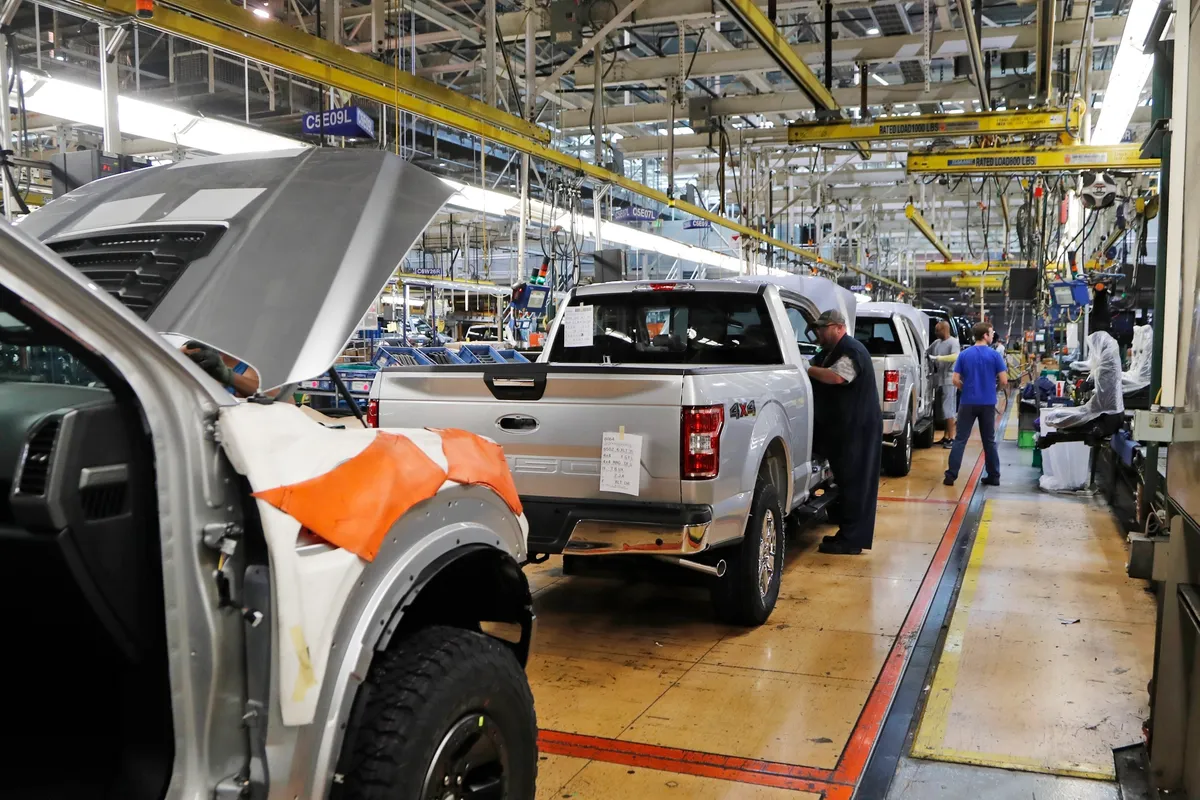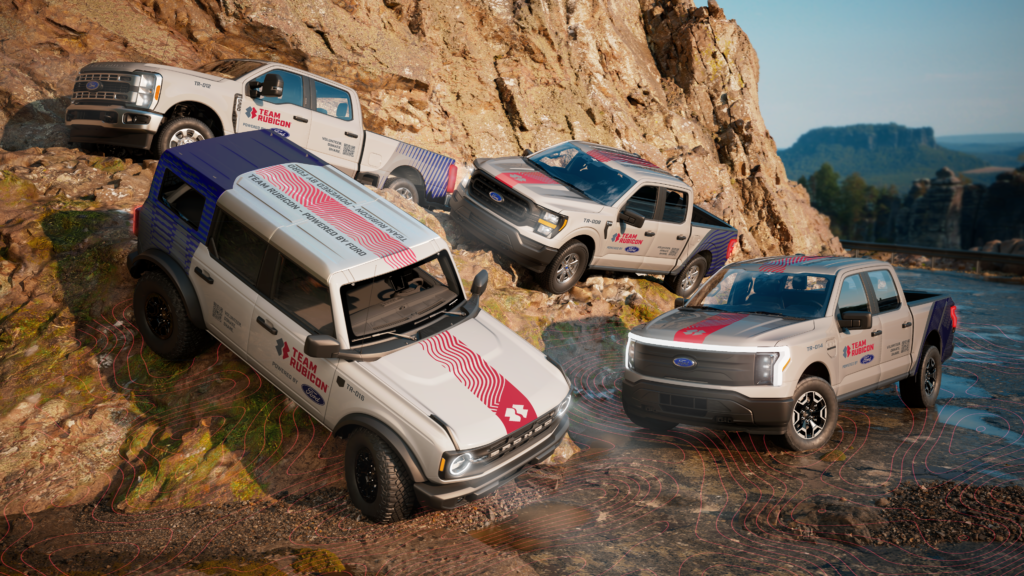Your cart is currently empty!
Built FORD Tough
Ford’s Purpose: “To help build a better world, where every person is free to move and pursue their dreams.” https://corporate.ford.com/about/purpose.htmlhttps://corporate.ford.com/about/purpose.html

Chapter 1 Blog: Competitive Advantage
The book references the rise and fall of Luckin. A seemingly plucky David like competitor to the Goliath we know as Starbucks. Luckin found ground success by capitalizing on the weaknesses of Starbucks such as eliminating cashiers and utilizing smartphones and multiple locations for pickup. However, the fall of luckin was just as quick.
With Ford being the industry giant such as Starbucks, many startups and new companies look to take advantage of their weakspots however, Ford holds a competitive advantage in its historical brand and flagship truckline the F-150.
This chapter defines competitive advantage as the analysis, decisions, and actions an organization takes in order to create and sustain competitive advantages. Ford continually leans into it’s competitive advantage which is it’s experience. With this experience, Ford can effectively invest into new technologies such as EVs, while not compromising it’s core brand.
Chapter 2: Analyzing the External Environment of the Firm
Chapter 2 talks about how successful managers must recognize opportunities and threats of their firm in the external environment. For Ford that includes its traditional competitive competitors, such as Chevrolet, Toyota & Honda but also new entrants such as Tesla, and Rivian.
this chapter defines perceptual acuity as the ability to sense what is coming before the fall clears Ford executives may ponder what is next what is coming and how can we get ahead of it chapter also highlights, historically, and accurate quotes by business leaders, such as how they were never be a demand for Apple iPhone, or there wouldn’t be enough videos to watch on YouTube. While these seem ridiculous now, business leader should always stay breast and open minded to the future of new ideas,
A large part of the chapter is dedicated to the six segments of the general environment, such as demographic, social, cultural, political, legal, technological, economic, and global. Of these factors a few examples stuck out to me. For example the demographic of Ford may change given millennials & Gen Z being new car buyers. Economic factors could mean more used cars being sold and technological factors could lend to how do does Ford implement AI.

This week’s deals
DISCOVERY THE TREND OF
GLASSES

SAVE 20% IN
MAN CLOTHING
Enjoy a special -20% discount on man category
Chapter 3: Assessing the Internal Environment of the Firm
This chapter emphasizes value creating activities such as operations marketing sales and procurement. Value-chain analysis views the organization as a sequential process of value creating activities. Value is the amount that buyers are willing to pay for what a firm provides them and is measured by total revenue a reflection of the price of firms product commands in the quantity you can sell.
Porters two value added activities include primary activities and support activities. Many activities include all that go into creating the product and service after the sale. Support activities include procurement technology development, human resource management, and general administration.
Ford’s primary activities include manufacturing cars trucks and EV’s. Supporting activities include financing and leasing of their vehicles. Ford also invests in its technology and workforce through active R&D and talent development. Ford also builds goodwill by partnering with projects such as Team Rubicon that assists after natural disasters. Ford is also a large ambassador for the US military through it’s ad campaigns and initiatives. These are just a few examples of Ford’s value added activities.

https://media.ford.com/content/fordmedia/fna/us/en/news/2023/06/203/ford-announces-team-rubicon-powered-by-ford–a–5-8m-investment-.html
Chapter 4: Recognizing a Firm’s Intellectual Assets:
Due to increased speed and competitiveness of modern business, all modern employees are knowledge workers. In a knowledge economy, wealth is created by effective management of knowledge workers instead of control of physical and financial assets.
Ford invests heavily into it’s technology development and and EV division and stimulates this growth by recruiting and developing top engineers.
Human capital is the individual capabilities, knowledge, skills, and experience of the companies employees and managers. Social capital is the network of relationships that individuals have throughout the organization. Another key concept in this chapter is the method of attracting, developing and maintaining talent. This challenged me to research how ford develops their talent force.
Ford recognizes the need for talent development by investing in the areas supporting it’s blue Oval initiatives. The upcoming blue Oval Tennessee plant will support its talent force of 6000 through stem curriculum events, manufacturing training in local schools, experiential learning, and training on advanced manufacturing according to workingnation.com
Chapter 5: Creating & Sustaining Competitive Advantage
In order to achieve and sustain a competitive advantage businesses must develop products and services that customers will find value in and provides a cost advantage. Ford has a long standing history of developing an industry leading pickup truck. The history and perfection in this market easily trump it’s closest competitors and give Ford the edge in the pickup space amongst old foes and new entrants into the market. The storied past of Ford also gives it a leg up against the competition in that it’s had time to master its logistics and manufacturing processes as well as develop and better relationships with suppliers.
Chapter 7: International Strategy Creating Value in Global Markets
International expansion presents great opportunities as well as threats. Businesses are at the mercy of international countries with risks such as political, economic, and management. Ford is continually expanding as evident by it’s growth in the EU. In recent news Ford BlueCruise, Ford’s hands-free driving technology was recently approved for use in multiple European nations.
Chapter 8: Entrepreneurial Strategy and Competitive Dynamics
There are three types of of entry strategies including pioneering, initiative, & adaptive which are common to launch a new business venture.
Pioneering is developing a new innovative product that changes the business sector as a whole.
One example of this is FORD’S delivery of the fully electric Ford F150. This put industry competitors on notice and may start a trend of electric trucks that bolster all of the towing power, worksite capabilities and storage while harnessing electric power.
Chapter 9: Strategic Control & Corporate Governance
This chapter highlights the effectivity of control systems.
Control systems provide key information to coordinate response to environmental challenges and feedback.
This includes the traditional approach to strategic control is sequential versus the contemporary control approach where relationships between strategy formulation, implementation, and control are highly interactive.
Ford is ahead of the curve in monitoring environmental factors and issues. As Indicated in this article Ford is committing to carbon neutral vehicles by 2050. https://www.just-auto.com/data-insights/ford-motor-net-zero-targets/
